
Matveev Bridge is one of the bridges in the center of St. Petersburg.
Matveev Bridge is thrown over The Kryukov Canal is located in the alignment of the Moika River and connects the Kolomna and Kazan Islands.
The name" Matveev " bridge has been worn since 2007, when, in the spirit of St. Petersburg toponymy, the bridge was renamed from the name "Matveev Bridge". In turn, the name "Matveev Bridge" was given to the ferry in March 1919, after the Bolshevik Matveev Sergei Matveevich, a commissar of a military unit who was killed on the Eastern Front during the liquidation of the Czechoslovak Corps mutiny.
This is a small bridge that has a total length of 26.8 meters,and a width of 10.5 meters.
Matveev Bridge has retained the general architectural appearance characteristic of the Kryukov Canal bridges of the 1780s.

Matveev Bridge is a three-span structure. The superstructure is a metal beam-continuous system with a curved outline of the lower belt. The bridge supports are rubble masonry with a massive granite facing. The abutments are concrete on a pile base, lined with granite.
On the intermediate river supports of the bridge, on granite pedestals, four shaped floor lamps of artistic casting with round lanterns are installed.
The railing of the bridge is a lattice of a simple pattern of metal rods reinforced between metal bollards.
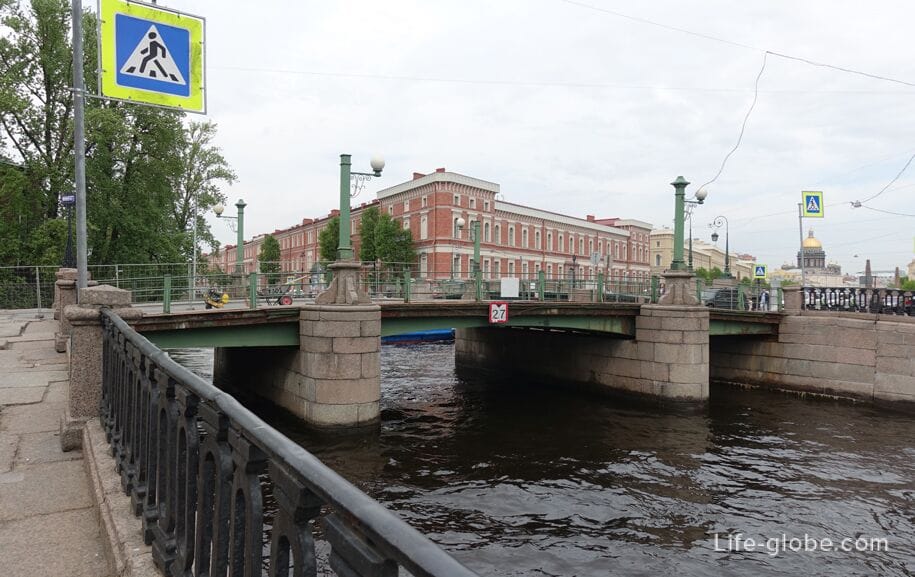
The bridge is designed for traffic and pedestrians.
The roadway of the bridge includes two lanes for traffic. The roadway and sidewalk are covered with asphalt concrete.
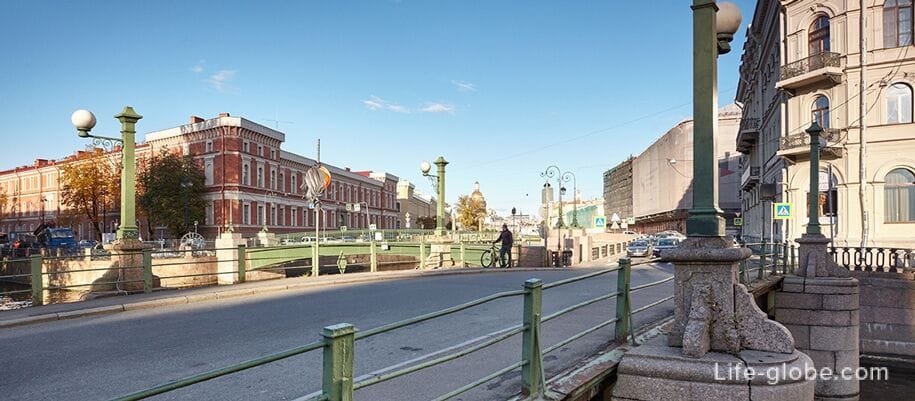
On both sides of the Matveev Bridge, along the Moika River embankment and the Kryukov Canal Embankment, there are corner buildings, one of which is a residential club house, and in the second (at the address: Moika River Embankment, 100) there is a museum and exhibition center "Petersburg Artist" with an art museum (website: piter-art).
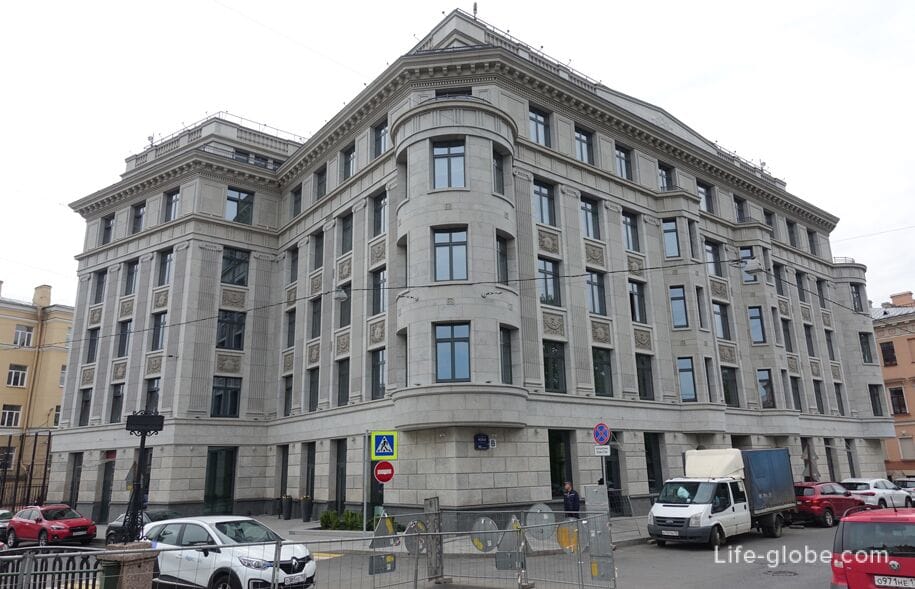

Via Moika river from Matveev bridge located: New Holland island and the Central naval Museum named after Emperor Peter the Great, located in the building of the former Kryukov barracks and is one of the oldest museums in Russia and one of the largest Maritime museums in the world, has one of the richest collections of ship models (the pride of the Museum is authentic Botik of Peter I, initially stored in Bot House Peter and Paul Fortress). The neighboring one is also visible Krasnoflotsky Bridge spanning the Moika River.
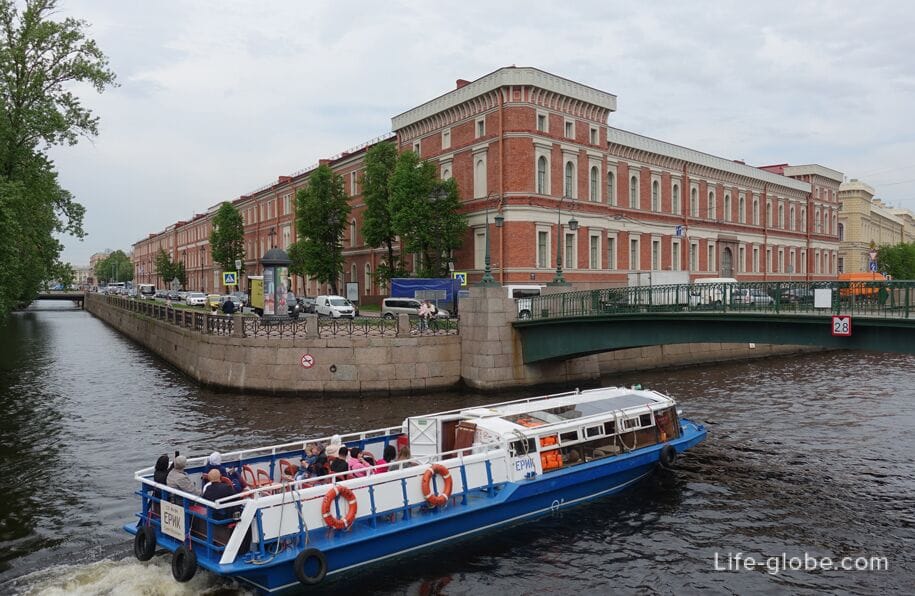
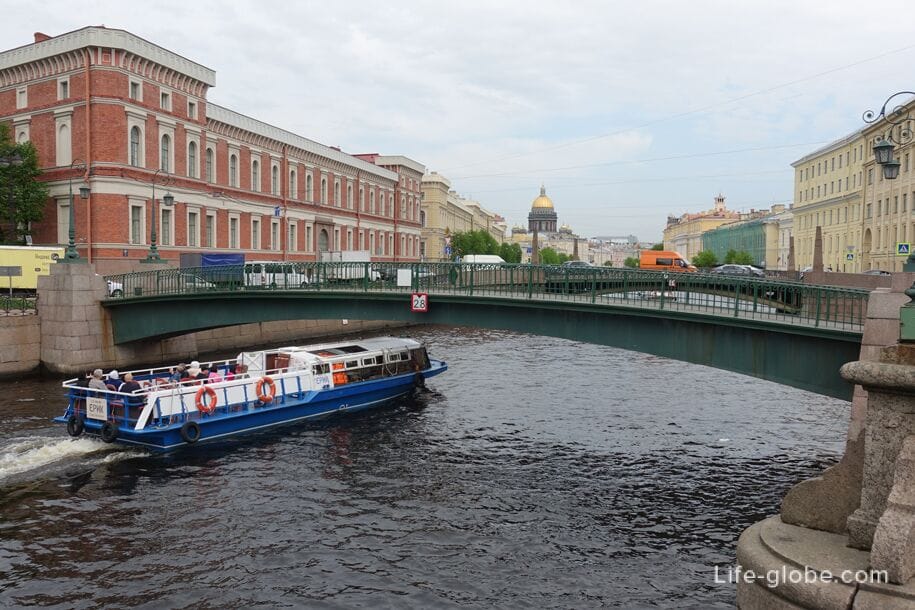
View from the Matveev Bridge to the Moika River
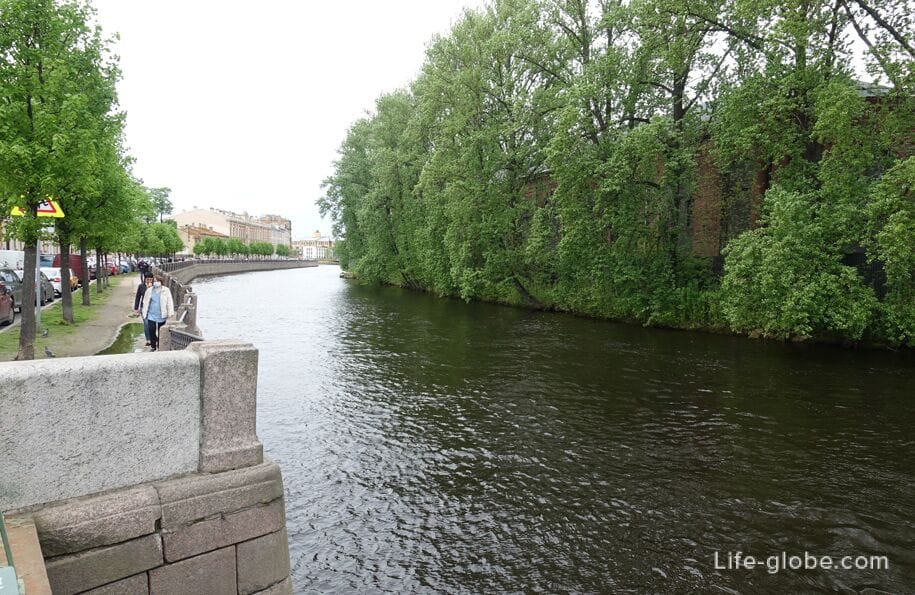
View from the Matveev Bridge to the Kryukov Canal
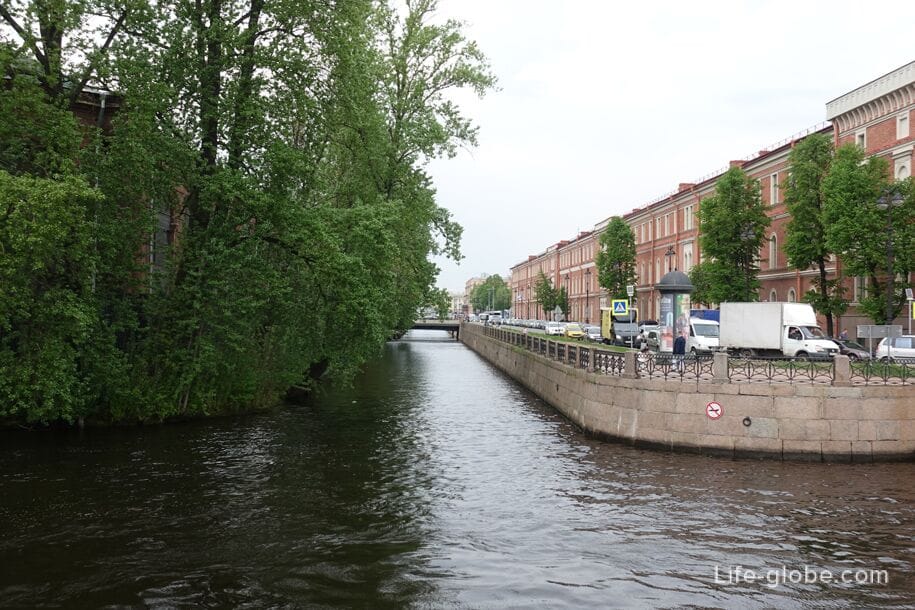
In 1782-1787, six standard bridges were thrown across the man-made Kryukov canal, dug in 1719-1720, - wooden three-span girders on stone supports with granite facings, the middle spans of which were movable lifting type.
Among these bridges was Matveev, which opened in 1785 and was decorated with 4 oval lanterns on cast-iron floor lamps. Then Matveev Bridge was called Konyushenny-along the Embankment of Konyushennaya Street (this name was borne in the 18th century by the left-bank embankment of the Moika). Then, along the Kryukov Canal, the bridge was named: Kanavsky, Kanalny and Kanavny. In the middle of the 19th century, the name Prison was fixed for the bridge-after the city prison located nearby, in the building of the Lithuanian Prison Castle (the building has not been preserved to this day).
In the middle of the 19th century, the lifting span of the bridge was replaced with a permanent one, first wooden, and then metal.
In 1950-1951, the bridge was rebuilt. In 1954, on the basis of the original project, granite shaped obelisks with lanterns on river supports were restored.
Coordinates of the Matveev Bridge: 59°55'39.0" N 30°17'37.0" E (59.927500, 30.293611).
Nearest metro stations: "Sennaya Ploshchad", "Sadovaya", "Spasskaya" and "Admiralteiskaya".
All accommodation facilities in St. Petersburg, including in the city center and more remotely from it, can be viewed and booked here